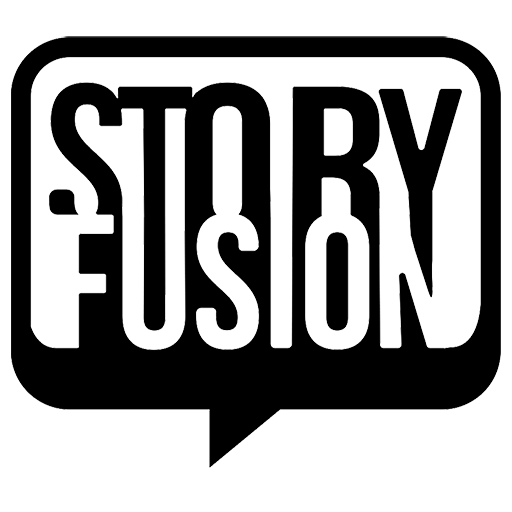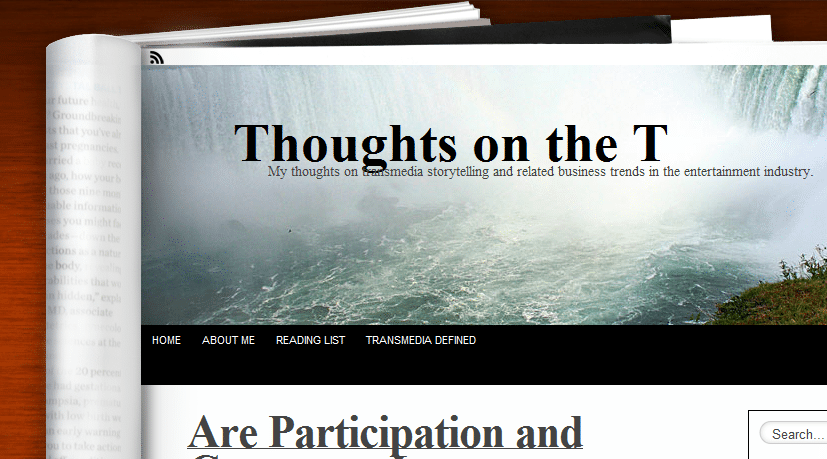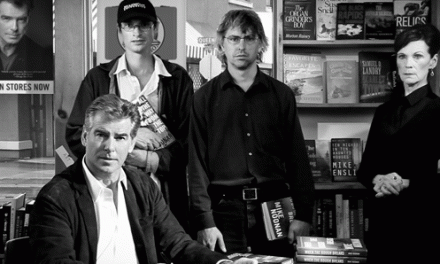A few days ago, we sent Christine Weitbrecht, a Transmedia Consultant based in Los Angeles, California, and Frankfurt, Germany our questions and talked to her on Skype. Christine graduated with a Bachelor of Science in Communication, Media, and Society from the University of Leicester, England, and with a Master’s of Communication Management from the University of Southern California’s Annenberg School for Communication and Journalism, California. Until recently, Christine was also a member of Civic Paths, a research group led by Henry Jenkins and Sangita Shrestova that explores the continuities between online participatory culture and civic engagement. We found Christine through her blog and her posts about StoryWorldConference. “Thoughts on the T” offers thoughts and advice on how transmedia storytelling affects entertainment business strategies, and how different media platforms should be used to create meaningful and immersive entertainment experiences. Christine can be contacted via Twitter (@ChristineWeitb) and LinkedIn.
Why transmedia?
In my opinion, transmedia is a logical consequence of convergence culture, and most importantly, of the many different media channels we now have available. This doesn’t mean that all future stories must be told via different media platforms, but if done right, transmedia storytelling can enrich our experience of entertainment immensely, and can help us sift through the infinite amount of content competing for our attention. It is so much easier to return to a particular storyworld than to familiarize yourself with new characters, new settings, and new background stories each time you’d like to watch a movie or television show, read a book, or play a game.
That’s why I am so passionate about transmedia: Whether you use it for branding, entertainment, or for good, transmedia creates lasting value. And because it makes use of the best each medium has to offer, a transmedia story can only survive if it is designed and told exceptionally well, and if it has a meaningful message. There is no room for cookie-cutting or assembly line production; a successful transmedia story universe requires depth, complexity, and a particularly harmonious integration of its media channels. From a consumer perspective, this boils down to immersive entertainment through outstanding content, and from the author’s (and business) point of view, transmedia offers a new form of artistic expression, loyal consumers, and long-term revenue flows. Overall, transmedia is a win-win situation.
What’s driving the sudden activity and buzz around “transmedia”?
There are many reasons behind the current ‘transmedia buzz’, so I’ll just talk about two trends that I find very important in answering this question: The emergence of smartphones and tablet computers, and the rapidly changing entertainment market.
Even though it has been possible for a while, smartphones and tablet computers are finally making it abundantly clear that it is easy to combine many different media forms in one device, and that different media can be integrated to engage users in many different ways. When Henry Jenkins coined the term ‘transmedia’ in 2006, the concept behind it was not new at all (Star Wars, for example, has been a transmedia project for decades), but it took a while until everyone, including consumers, wrapped their heads around it. Now that smartphones and other mobile computers are, in a way, a manifestation of the transmedia concept, more and more people are searching for a term to describe this integration of media, and so the word ‘transmedia’ is gaining popularity. What’s more, the fact that different types of media become accessible through one single device also helps to convince skeptics in the entertainment industry that transmedia storytelling is indeed an economically viable idea, mostly because it makes it easy for users to switch between different media platforms.
At the same time, companies and content producers are looking for new ways to make use of the multitude of media channels available for entertainment and/or marketing and branding and to bind consumers long-term in extremely competitive and volatile markets. Transmedia offers solutions for both of these problems, and the concept behind it is no rocket science – telling stories is universal. As a result, transmedia appeals to professionals in many different industries and, as a term, circulates across them, creating buzz.
Can you think of any examples or great case studies for how things should play out?
What projects make for great transmedia case studies really depends on what you are looking for, what the purpose of the content is, and how you define transmedia (currently, there is no single, ‘one’ definition, and it is questionable whether there will – or should – be).
In terms of mainstream entertainment transmedia storytelling, Star Wars is my absolute favorite. Over decades, Lucasfilm has carefully managed and licensed additional content in a way that creates an almost infinite story universe, and it is still growing – just look at the launch of their recent MMO The Old Republic.
If you’re looking for examples on transmedia branding, on the other hand, I’d direct you towards Coca Cola’s “Happiness Factory” which has been successful for four years now. I’d also recommend you have a look at their “Liquid and Linked Content” video in which Coca Cola’s branding and advertising efforts are explained with incredible insight.
Finally, I’d also like to point to Harry Potter. In the strictest sense, Harry Potter is not a transmedia project (yet; Pottermore remains closed to the public at the moment) because it relies on re-purposed content: adaptations of the book in movies and computer games. Some transmedia professionals would argue that true transmedia projects must use each media platform to add entirely new content to the overall storyworld instead of just displacing existing content from one channel to another. I agree with this view in general, but I also found that in some cases, ‘repurposing’ existing content can also lead to deep transmedia experiences for the user if one medium’s benefits complement the shortcomings of another. For example, the last Potter movie, Harry Potter and the Deathly Hallows: Part 2 was a wonderful visual experience, but it fell short in terms of story depth and breadth due to a film’s limited possibilities regarding time and character perspectives. Had I only watched the movie, I would probably have considered the story spectacular (thanks to the special effects) and fairly moving (thanks to decent acting); having read the book (spoiler alert!), however, it only took a short glimpse at the grieving Weasley family in the Great Hall to bring up the detailed description of their devastation that Rowling describes so well in the book but which cannot be shown fully in the movie. There were many more moments like this throughout the film, and all of them set a perfect example how careful narrative design can create an immersive and meaningful transmedia experience even if the content is repurposed by highlighting different aspects of a story.
So there are really a variety of great transmedia projects out there, but it really depends on what you consider to be ‘transmedia’ and what the purpose of your content is to point out an ideal case scenario.
Do you think that only Hollywood and big networks are able to realise “cool” transmedia projects? (What does it need to accomplish great projects?)
[lightbox full=”https://tmsb.de/wp-content/uploads/2012/01/Christine-Weitbrecht.jpg” title=”Christine Weitbrecht”] [/lightbox]Definitely not. It goes without saying that transmedia projects in general require a certain budget to pay for the production of different types of media content, but I think what many people forget is that in transmedia storytelling, the story comes first, and the media used second. If your audience is supposed to actively follow your narrative from one medium to another spectacle is not enough. Compelling characters, relatable themes, and a gripping narration are the key factors that make your audience care deeply for your content and follow you wherever the story goes to find out what happens next. Writing an outstanding story isn’t a matter of money but of talent. It’s great if you are a Hollywood studio and have deep pockets to rely on, but it’s certainly no guarantee for success in transmedia. As a matter of fact, deep pockets are never a guarantee for success in entertainment – just look at this year’s box office performances or the many TV pilots that flopped despite big budgets. No matter which medium, the thing that counts for your audience is the story you tell. If it strikes a chord with your audience and is in one way or another meaningful to them, they will follow your story, no matter what the size of your budget is.
[/lightbox]Definitely not. It goes without saying that transmedia projects in general require a certain budget to pay for the production of different types of media content, but I think what many people forget is that in transmedia storytelling, the story comes first, and the media used second. If your audience is supposed to actively follow your narrative from one medium to another spectacle is not enough. Compelling characters, relatable themes, and a gripping narration are the key factors that make your audience care deeply for your content and follow you wherever the story goes to find out what happens next. Writing an outstanding story isn’t a matter of money but of talent. It’s great if you are a Hollywood studio and have deep pockets to rely on, but it’s certainly no guarantee for success in transmedia. As a matter of fact, deep pockets are never a guarantee for success in entertainment – just look at this year’s box office performances or the many TV pilots that flopped despite big budgets. No matter which medium, the thing that counts for your audience is the story you tell. If it strikes a chord with your audience and is in one way or another meaningful to them, they will follow your story, no matter what the size of your budget is.
What do you wish for upcoming transmedia projects?
Generally we’re already heading into the right direction, I think. There are many different transmedia projects at the moment that experiment with various story types, media combinations, and genres. I’m also glad we continue to move away from the debate over exact and theoretical ‘transmedia’ definitions and instead see increasing applications of many different approaches to transmedia, mostly amongst independent productions. In order for transmedia to really take off now it is important that mainstream entertainment companies develop transmedia projects as well, and that they do so on a grand and highly visible scale; projects like Pottermore, for example, will play a crucial role in furthering the transmedia thought.
The biggest hurdles transmedia still faces at the moment, however, are solely structural – legal, internal, generational, licensing, etc. Let alone the issues of international licensing and distribution rights for one single industry like film or television are a big mess on their own, and in a world of global users these traditional distribution models are simply no longer sustainable. Thus, the way I see it, transmedia’s biggest enemy right now is the inertia with which governments and big industry players react to media convergence and the globality of media consumption. It is an incredibly slow and painful process to break down the silo-structure of each entertainment field – film, television, publishing, online content, etc. – on national and international levels, and truth be told, it’s simply not happening fast enough at the moment. Users are extremely quick to adopt new ways of experiencing entertainment content, the proportion of English-speakers (first and second language) multiplies on a global scale, the Internet allows all of us to consume content instantly and collectively, there are easy and international payment methods available online and offline, and global media conglomerates are in complete control many different media channels. Technically, these are ideal conditions to create transmedia narratives to be distributed on a global scale. What’s left in the way of realizing transmedia narratives is outdated thinking.
I have no doubt that these restrictive frameworks will eventually break down, but I am hoping that it will happen sooner rather than later. Right now, the entertainment industry and its big players have the opportunity to act rather than to be forced to react in a few years, and I hope they will make use of this opportunity.
NB: If you would like to learn more about the current efforts of silo breaking, I recommend having a look at this Quora forum.
What is the transmedia scene in your country like?
Although I’m originally from Germany I spent the last 18 months in Los Angeles, so I know the American transmedia scene best, and more particularly, the transmedia scene on the West Coast. Both the West Coast and the East Coast have very vibrant transmedia scenes with meet up groups (the two biggest ones are probably the meet up groups in LA and New York) and continuous online exchanges. Many, if not most, of Transmedia LA’s members are independent producers and artists as the big Hollywood studios themselves are quite slow in adopting the transmedia thought. The transmedia scene in LA also has the advantage of having Henry Jenkins right there at the University of Southern California, and Henry has been talking to the Transmedia LA group more or less once a year.
Los Angeles has also had its share of transmedia conferences, namely the Transmedia Hollywood conference series and DIY Days. The StoryWorld Conference 2011 in San Francisco wasn’t too far away either, and there are rumors that the next SWC will take place in Los Angeles as well (by the way, SWC is an absolute must for anyone interested in transmedia). So really, Los Angeles is probably one of the best places to be for transmedia right now. I’ve very much enjoyed my time there, and I’m extremely glad that I’ve had the opportunity to meet such great and bright transmedia professionals in Los Angeles.
Thanks a lot for your inspiration Christine!
© aller Logos und Abbildungen bei den Rechteinhabern.
(All pictures, trademarks and logos are protected.)







Recent Comments